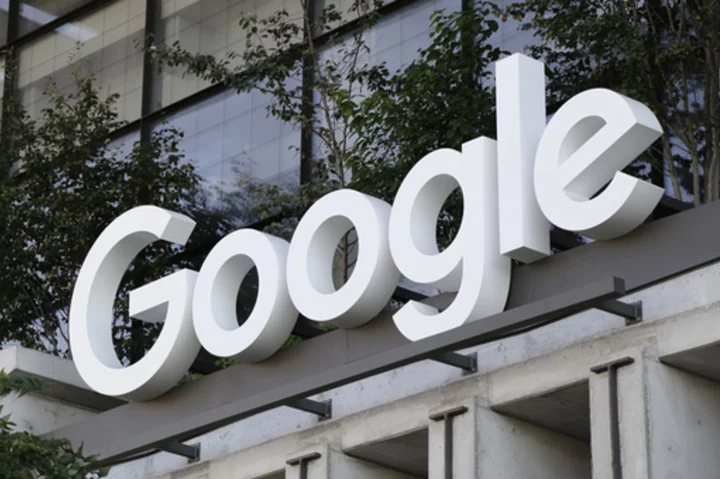By Lucia Mutikani
WASHINGTON U.S. consumer prices were unchanged in October as Americans paid less for gasoline, and the annual rise in underlying inflation was the smallest in two years, bolstering the view that the Federal Reserve was probably done raising interest rates.
Though rents continued to rise last month, the pace of the increase slowed considerably from September. The softer-than-expected inflation readings reported by the Labor Department's Bureau of Labor Statistics (BLS) on Tuesday pushed U.S. Treasury yields lower and sparked a stock market rally.
Combined with data this month showing job and wage growth cooling in October, the data reinforced expectations the economy could avoid a dreaded recession.
"The Fed always wants to see more progress, but it is looking like the inflation battle has rounded the corner," said Christopher Rupkey, chief economist at FWDBONDS. "With any luck, the economy will miss a recession and get lower inflation too."
The unchanged reading in the consumer price index, the first in more than a year, followed a 0.4% rise in September.
Gasoline prices dropped 5.0%, offsetting the continued increase in the cost of rental accommodation. Prices at the pump rose 2.1% in September.
Food prices gained 0.3% after climbing 0.2% in each of the prior three months. Grocery food prices increased 0.3%, driven by higher costs for meat, fish and eggs. Cereals and bakery products also cost more, while fruit and vegetable prices were unchanged.
In the 12 months through October, the CPI climbed 3.2% after rising 3.7% in September.
Economists polled by Reuters had forecast the CPI would gain 0.1% on the month and increase 3.3% on a year-on-year basis.
Though year-on-year consumer price rises have come down from a peak of 9.1% in June 2022, the disinflationary trend had stalled in recent months against the backdrop of a strong economy that is being powered by a relatively tight labor market. Inflation continues to run above the Fed's 2% target.
Most economists believe the U.S. central bank's fastest monetary policy tightening campaign since the 1980s is over, a narrative that Fed Chair Jerome Powell and other policymakers have pushed back against. Powell said last week that "if it becomes appropriate to tighten policy further, we will not hesitate to do so."
Financial markets are even anticipating a rate cut next May, according to CME Group's FedWatch tool. Since March 2022, the Fed has hiked its policy rate by 525 basis points to the current 5.25%-5.50% range.
U.S. Treasury prices soared, with the yield on the interest rate sensitive two-year note hitting a two-week low. The dollar fell against a basket of currencies. Stocks on Wall Street were trading sharply higher.
GOODS DEFLATION CONTINUES
"Whether or not the economy can stay out of recession remains to be seen, but the stock market should continue to rally as people begin to accept that higher rates are off the table, which should push stock and bond prices higher, and bond yields lower," said Chris Zaccarelli, chief investment officer at Independent Advisor Alliance in Charlotte, North Carolina.
Excluding the volatile food and energy components, the CPI increased 0.2% amid higher costs for rental housing. The so-called core CPI had risen by 0.3% for two straight months. The core CPI advanced 4.0% on a year-on-year basis in October, the smallest gain since September 2021, after increasing 4.1% in September.
Owners' equivalent rent, a measure of the amount homeowners would pay to rent or would earn from renting their property, increased 0.4% after surging 0.6% in September. With the rental vacancy rate rising to more than a two-year high in the third quarter and a huge pipeline of apartment buildings, rents are expected to push inflation lower next year.
The cost of hotel and motel rooms declined 2.5% in October. Americans continued to pay more for motor vehicle insurance, with prices accelerating 1.9%. Recreation, personal care and apparel also cost more. But consumers got relief from cheaper airline fares, household furnishings and operations. New motor vehicles cost slightly less, as did communication services.
While prices for used cars and trucks declined for a fifth consecutive month, the pace of decrease slowed. Used cars and trucks have been the main driver of goods deflation. Goods prices dropped 0.4% and were down 0.1% excluding food and energy, after falling 0.4% in September.
Healthcare costs increased 0.3% amid rises in prices for hospital services and prescription medication. Doctor visits cost less. Health insurance costs rebounded 1.1% after months of declines as the BLS implemented changes to the methodology it uses to calculate health insurance prices, effective with October's CPI release.
The old method was based on an annual calculation using aggregated health insurance premium and benefit data. There were concerns about the volatility in the annual data and the lag involved in incorporating the health insurance financial data.
The new method introduces smoothing to the health insurance index to reduce the volatility and also incorporates semi-annual financial data, which will shorten the lag in the index by six months. The BLS will update retained earnings every six months using half-year data and will calculate a two-year moving average to smooth the changes in retained earnings.
Overall services inflation increased 0.3% after jumping 0.6% in September. Core services rose 0.3% after rising 0.6% in the prior month. Despite last month's encouraging readings, some economists cautioned that inflation still had a long way to go before returning to the Fed's 2% target. They also noted that consumers' inflation expectations had risen in October.
"It's still premature to call the inflation fight over," said Will Compernolle, a macro strategist at FHN Financial in New York. "The biggest contributors to October disinflation, falling energy, core goods prices and decelerating shelter inflation are all the outer layers of the Fed's 'inflation onion' that won't contribute to disinflation forever."
(Reporting by Lucia Mutikani; Editing by Chizu Nomiyama, Andrea Ricci and Paul Simao)









